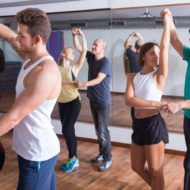During the tumultuous history of the 20th century, nations have been dissolved and created. In the latter instance, dance has been utilized to create and to critique national identity. In The Body of the People, Jens Richard Giersdorf examines these dual functions during the brief existence (1949-1989) of the socialist German Democratic Republic (GDR).
Giersdorf argues that dance in the GDR “is one of the few cases in recent times of dance being purposefully utilized for the establishment of a distinct national identity at all levels of artistic practice and social discourse.”… Read More


